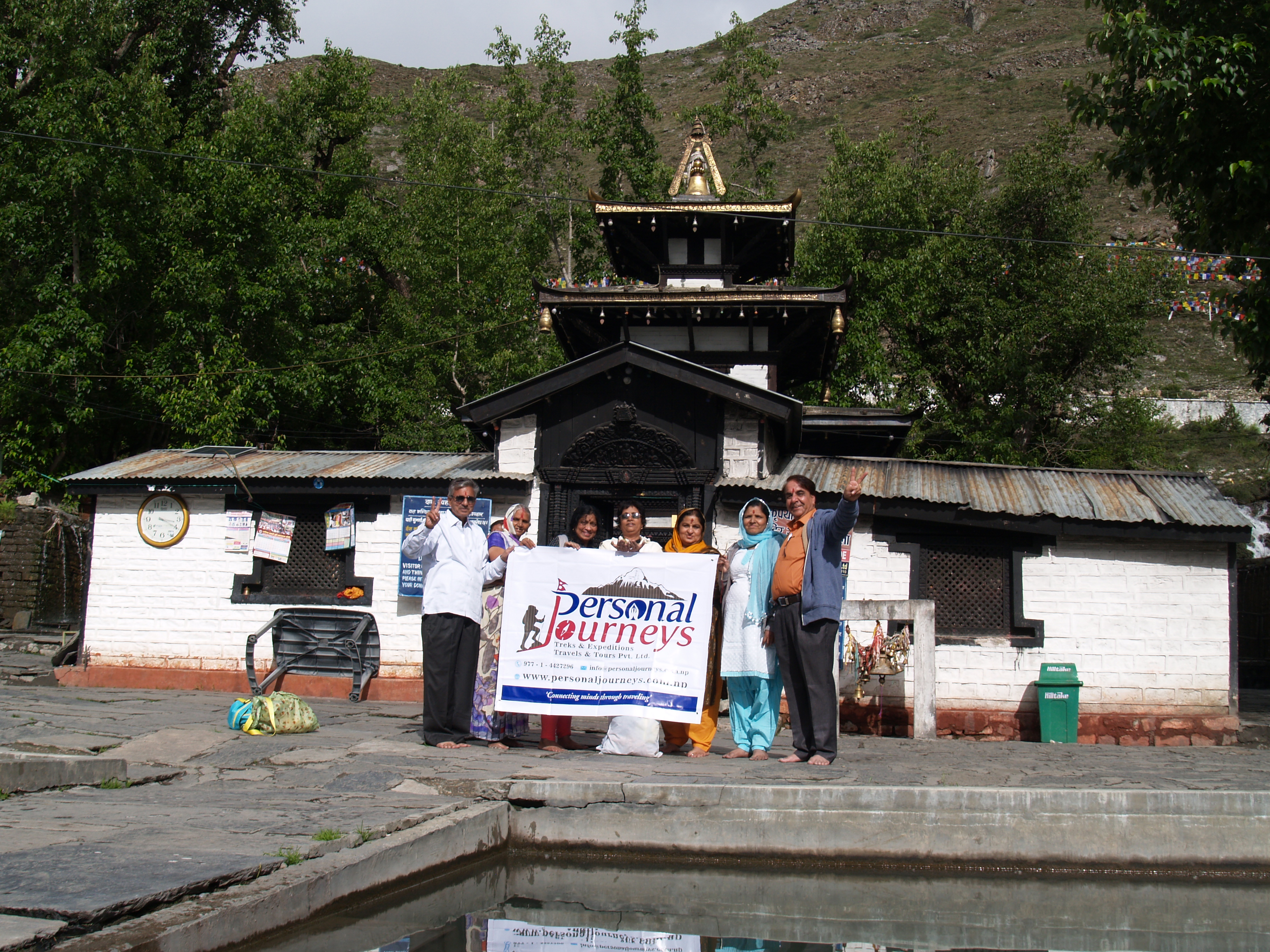Muktinath is a sacred place for both Hindus and Buddhists located in Muktinath Valley at an altitude of 3,710 meters.
Within Hinduism, it is called Mukti Kshetra, which literally means the “place of liberation or moksha”. For Tibetan Buddhists, Muktinath is a very important place of dakinis, goddesses known as Sky Dancers, and one of the 24 Tantric places.
The central shrine of Sri Muktinath is considered by Hindu Vaishnavas to be one of the eight most-sacred shrines, known as Svayam Vyakta Ksetras; the other seven being Srirangam, Srimushnam, Tirupati, Naimisharanya, Thotadri, Pushkar and Badrinath. The temple is very small. Muktinath is one of the most ancient Hindu temples of God Vishnu. The murti is of gold and is tall enough to compare with[clarification needed] a man. The prakaram (outer courtyard) has 108 bull faces through which water is poured. The sacred water that flows in 108 pipes around the temple complex denotes all the sacred Pushkarini waters (Temple Tanks) from all the 108 Sri Vaishnava Divya Desams, where the devotees take their sacred bath even in freezing temperatures. The worship is conducted by Buddhists, with a Buddhist monk present. A local nun manages the pujas (prayer rituals) in the temple. Pilgrims who go there are expected to offer a prasad (religious offering of food) to the deity.
The Muktinath Temple is considered to be a Shakti Peetha for a yatra. Shakti Peethas are sacred abodes of Shakti (primordial cosmic energy), formed by the falling of body parts of the corpse of Sati Devi, when Lord Shiva carried it and wandered. Sati Devi’s temple on the forehead is believed to have fallen here.
The Tibetan Buddhist tradition states that Guru Rinpoche, also known as Padmasambhava, the founder of Tibetan Buddhism, had meditated at Muktinath on his way to Tibet.
The waterway downstream from Muktinath along Kali Gandaki is the source of all Silas or Shaligrams that are required to establish a temple of Vishnu. It is considered to be one of the holiest places of pilgrimage for Hindus and Buddhists. It has 108 water springs, a number which carries great significance in Hindu philosophy.
The entire river Gandaki bed has Shaligram stones which are used to worship Lord Vishnu.
It is said that one has to be gifted to get the ‘darśan’ (divine presence), as the deity in the temple Lord Sri Vishnu murthi and Goddess SriDevi and Bhoodevi believed to give Jeevan Mukthi hence He is called MUkTHINATH.
Access is difficult because of harsh weather conditions. The most suitable time to visit is from March to June. There are flights from Kathmandu to Pokhara and then to Jomsom Airport. From there, one can either trek all the way or take a jeep to Muktinath, a journey which passes many archeological sites and temples. Tourists are also known to charter a helicopter for a 45-minute flight, though this carries a risk of acute mountain sickness (AMS) and is only recommended for brief visits.
Day 1: Arrival Kathmandu
Day 2: Kathmandu sightseeing
Visiting sites : Pashupati Nath, Budhanilkantha, Krishna temple
Day 3: Kathmandu to Pokhara
On the way Manakamana temple
Day 4 : Pokhara to Muktinath via Jomsom
Muktinath temple and other temples in Muktinath area
Day 5: Jomsom To Pokhara
Taal Barahi temple, Bindabasini temple ,Guptashawar temple
Day 6: Pokhara to Kathmandu
Day 7 : Departure







